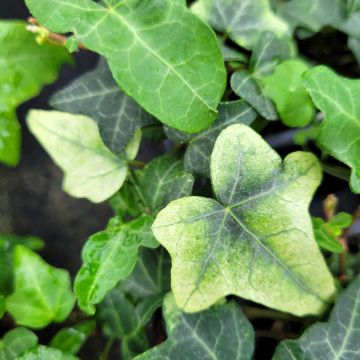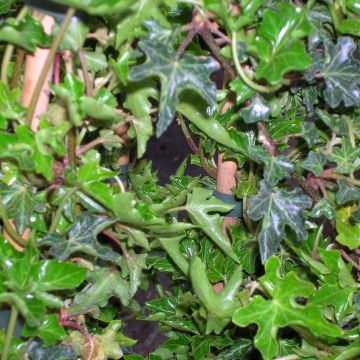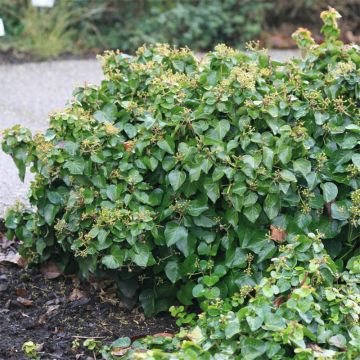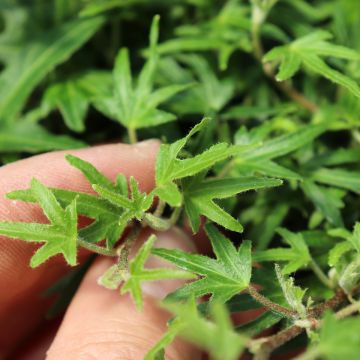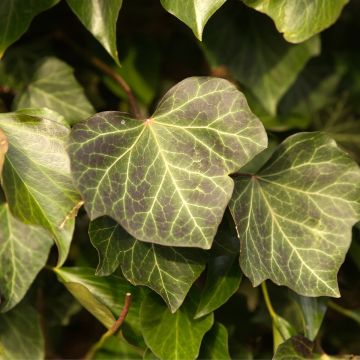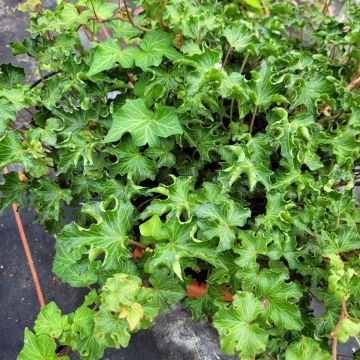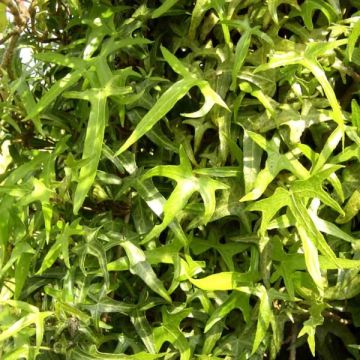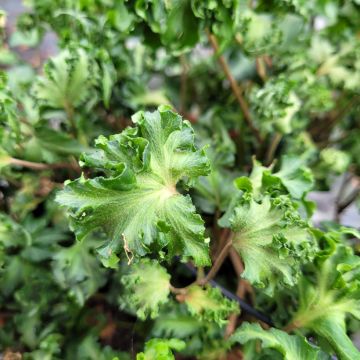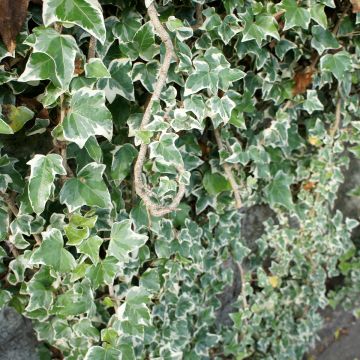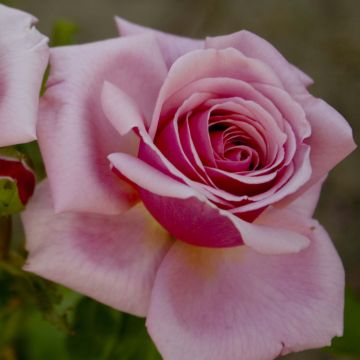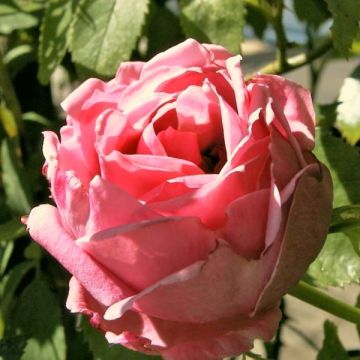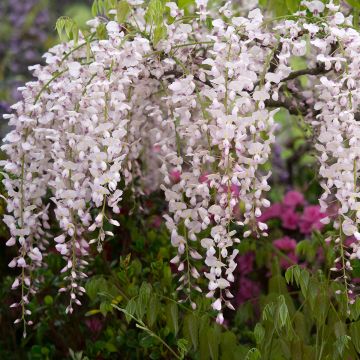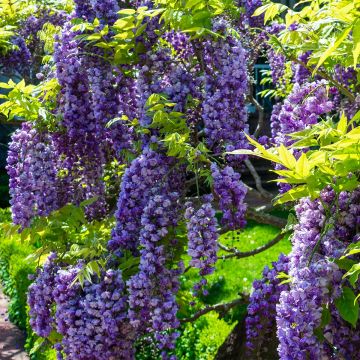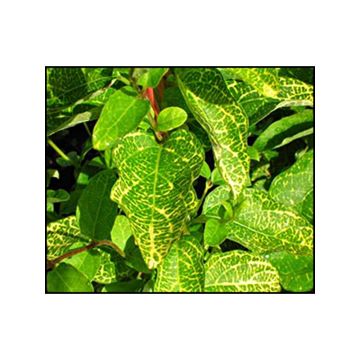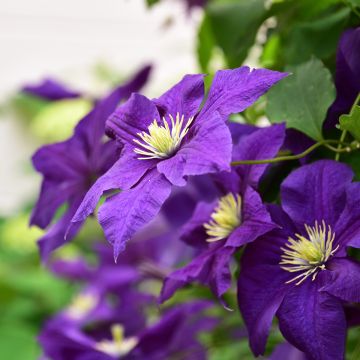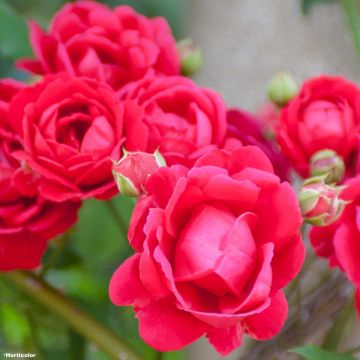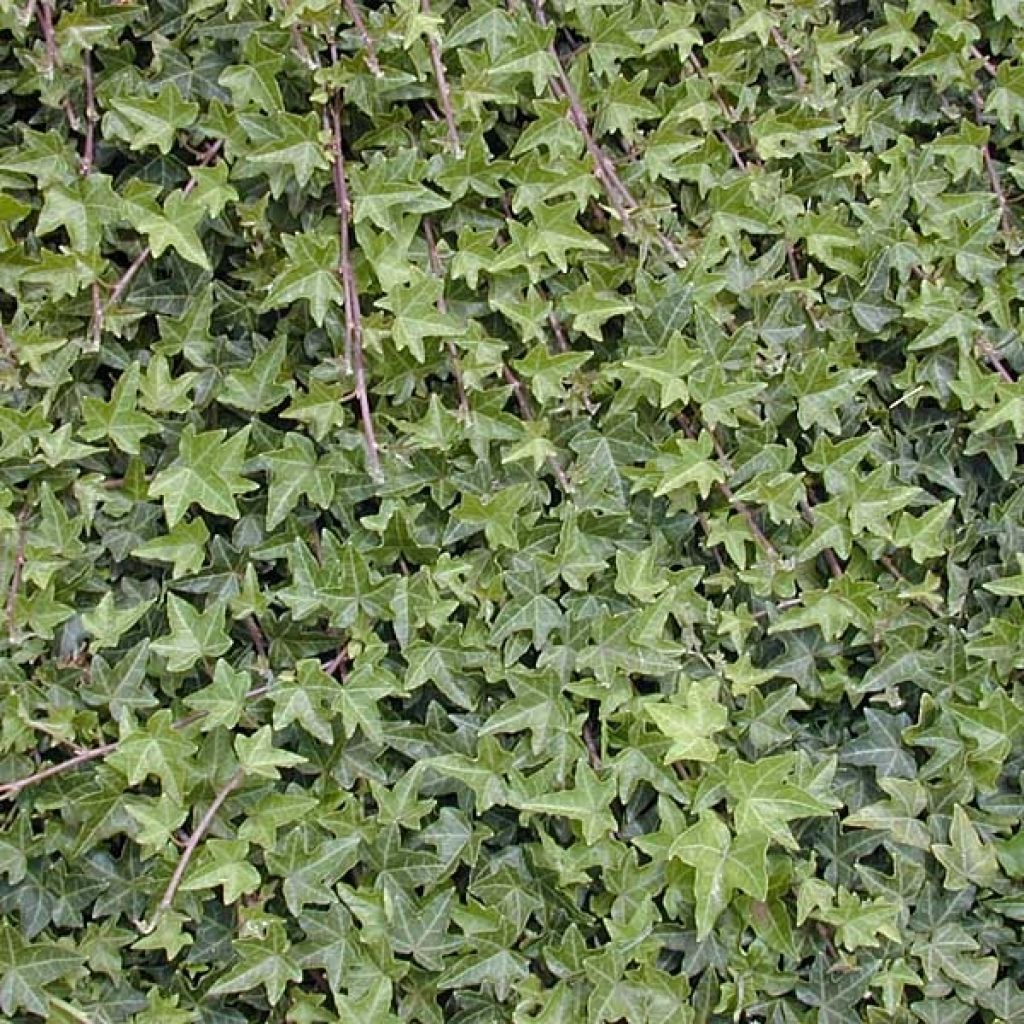

Hedera helix - Common Ivy
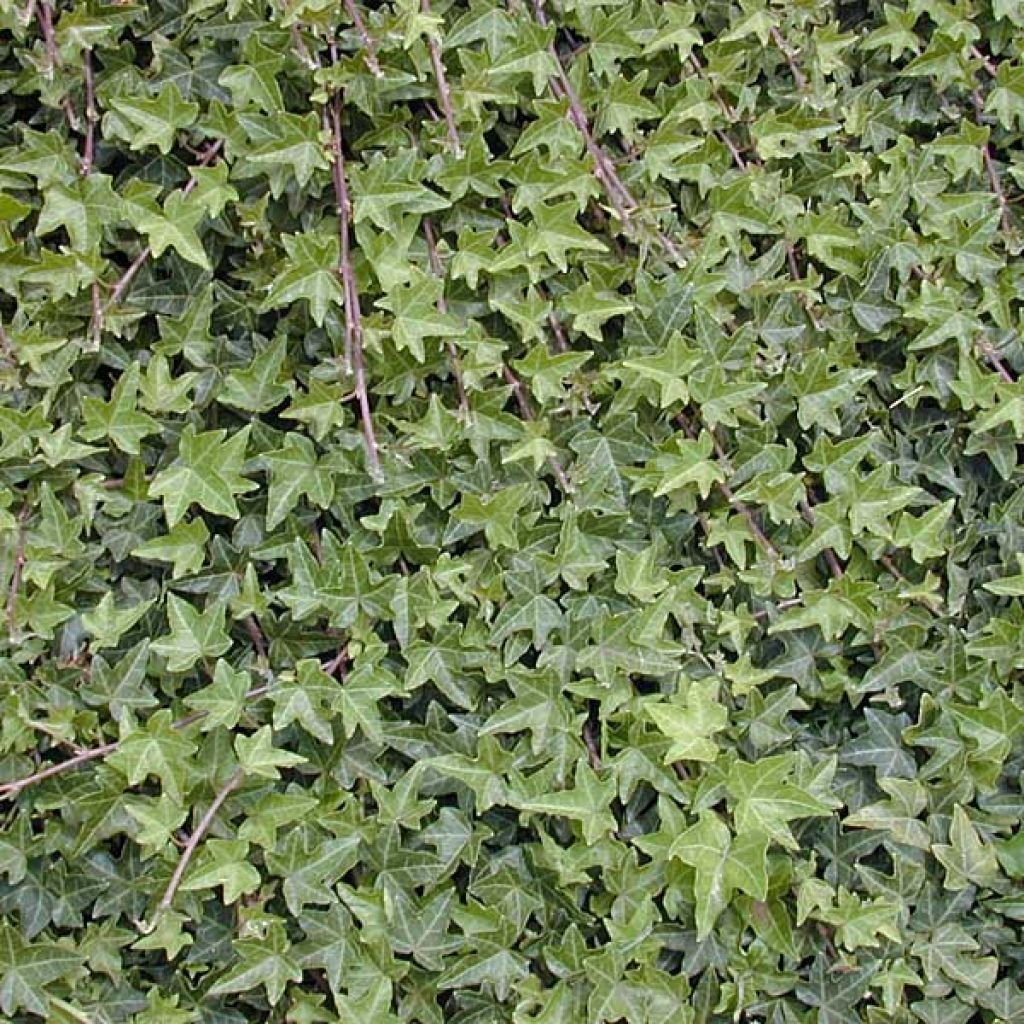

Hedera helix - Common Ivy
Hedera helix - Common Ivy
Hedera helix
English ivy, Common ivy, European ivy
Satisfied with the plants, a bit thin perhaps considering the price, but should hopefully establish itself quickly.
claudine, 13/04/2023
This item cannot be shipped to the selected country
Delivery charge from €5.90
Delivery charge from €5.90
Delivery charge from €5.90
Oversize package delivery charge from €6.90
More information
Schedule delivery date,
and select date in basket
This plant carries a 6 months recovery warranty
More information
We guarantee the quality of our plants for a full growing cycle, and will replace at our expense any plant that fails to recover under normal climatic and planting conditions.
From €5.90 for pickup delivery and €6.90 for home delivery
Express home delivery from €8.90.
From €5.90 for pickup delivery and €6.90 for home delivery
Express home delivery from €8.90.
From €5.90 for pickup delivery and €6.90 for home delivery
Express home delivery from €8.90.
Oversize package: home delivery by special carrier from €6.90 per order..
Express home delivery from €8.90.
Does this plant fit my garden?
Set up your Plantfit profile →
Description
Hedera helix is so well-known that it is almost unnecessary to introduce it. While everyone is aware of the multiple uses that can be made of this climbing shrub, it is sometimes preceded by an unflattering reputation. However, ivy is as useful to small wildlife as it is to gardeners. Capable of adapting to all soils and climates, it is a valuable plant for quickly covering areas where nothing grows, whether vertically or horizontally!
Ivies belong to the Araliaceae family, and are cousins of ginseng and fatsias. Hedera helix is native to the entire Eurasian temperate zone of the northern hemisphere. A fast-growing climbing or creeping plant, it can cover an area of 10m (33ft) in all directions, or even more, by spontaneously layering itself from place to place. Its leaves are evergreen in winter. They are borne on thick, greyish, star-shaped hairy branches. The stems attach themselves to supports provided for them by powerful climbing roots that are transformed roots, bearing suction cup hairs. They have no nutritive function, as ivy feeds solely through its underground root system.
There are two different leaf forms on the plant, depending on their function. The often creeping cauline leaves are divided into 5 lobes that are marbled with light green on a dark green background. Those of the flowering stems are exposed to light, and are more oval, shaped like a spade, and a brighter green. Flowering occurs in September-October, and fruiting in late winter or early spring. The tiny cream to yellowish-green flowers have five petals. They are grouped in umbels arranged in round clusters that are popular with all sorts of bees. The fruits are very small black-blue berries, gathered in clusters. They are toxic if ingested by mammals and especially humans, but nutritious and valuable for birds such as sparrows and pigeons. The birds spread the seed with their droppings.
Ivy quickly beautifies all difficult areas of the garden. It quickly cover up anything that needs to be hidden, including conifers that have withered in a hedge. In this use, it will be supported by evergreen shrubs such as laurustinus, Portuguese laurel, or hedge clematis. It effectively and perfectly covers the ground, eventually discouraging weeds while keeping the soil slightly cool at the base of trees and shrubs. Plant it with spring-flowering bulbs such as botanical daffodils or muscari to brighten up its foliage. These blooming bulbs will emerge from the green carpet in spring.
Contrary to popular belief, ivy very rarely suffocates old trees. In fact, ivy protects their bark and provides shelter for useful small fauna, also serving as nesting sites and shelters for birds. Hedera helix is a good wall cover, but do not overuse it as it can quickly become invasive. Although its reputation as a demolisher is well established, it has protected dilapidated old walls more than it has destroyed them. Removing the plant when firmly anchored in the crevices causes the masonry to collapse, while the plant maintains its integrity. However, its use on facades should be avoided.
Report an error about the product description
Hedera helix - Common Ivy in pictures
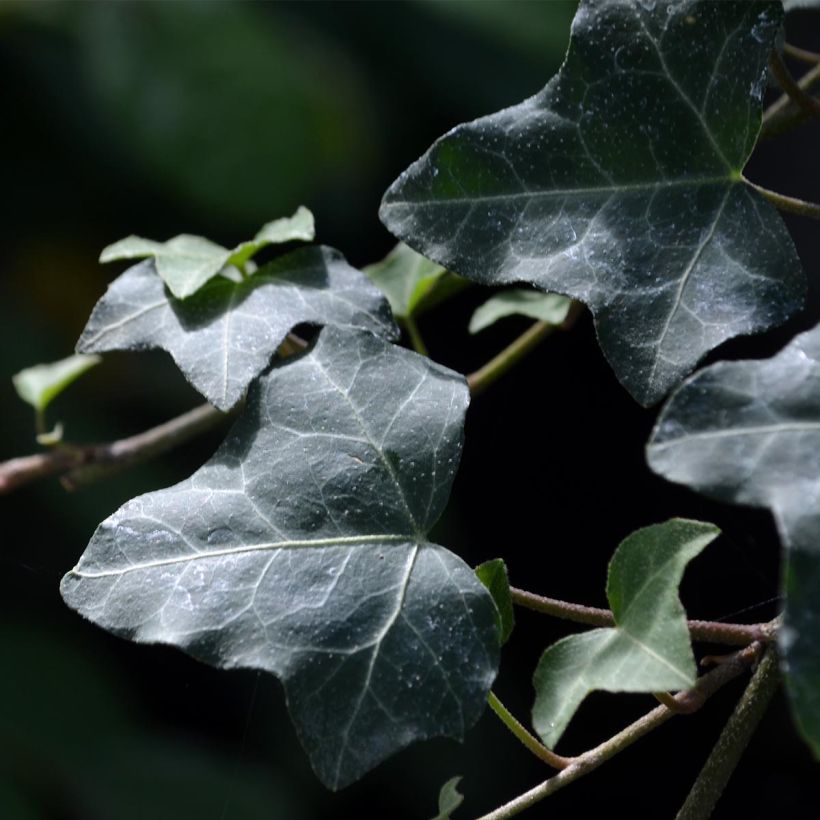

Plant habit
Flowering
Foliage
Botanical data
Hedera
helix
Araliaceae
English ivy, Common ivy, European ivy
Western Europe
Other Hedera - Ivy
Planting and care
It is very easy to grow and can tolerate all types of soil and exposure, except for extremely dry and scorching situations. Accustomed to temperate forests, it prefers a semi-shady position and moist, preferably limestone soil. Once established, it withstands summer drought perfectly. Water generously when planting and in the following weeks. Prune regularly to give it a desired shape. Prune it during flowering to prevent excessive self-seeding.
Planting period
Intended location
Care
-
, onOrder confirmed
Reply from on Promesse de fleurs
Foolproof climbers
Haven't found what you were looking for?
Hardiness is the lowest winter temperature a plant can endure without suffering serious damage or even dying. However, hardiness is affected by location (a sheltered area, such as a patio), protection (winter cover) and soil type (hardiness is improved by well-drained soil).

Photo Sharing Terms & Conditions
In order to encourage gardeners to interact and share their experiences, Promesse de fleurs offers various media enabling content to be uploaded onto its Site - in particular via the ‘Photo sharing’ module.
The User agrees to refrain from:
- Posting any content that is illegal, prejudicial, insulting, racist, inciteful to hatred, revisionist, contrary to public decency, that infringes on privacy or on the privacy rights of third parties, in particular the publicity rights of persons and goods, intellectual property rights, or the right to privacy.
- Submitting content on behalf of a third party;
- Impersonate the identity of a third party and/or publish any personal information about a third party;
In general, the User undertakes to refrain from any unethical behaviour.
All Content (in particular text, comments, files, images, photos, videos, creative works, etc.), which may be subject to property or intellectual property rights, image or other private rights, shall remain the property of the User, subject to the limited rights granted by the terms of the licence granted by Promesse de fleurs as stated below. Users are at liberty to publish or not to publish such Content on the Site, notably via the ‘Photo Sharing’ facility, and accept that this Content shall be made public and freely accessible, notably on the Internet.
Users further acknowledge, undertake to have ,and guarantee that they hold all necessary rights and permissions to publish such material on the Site, in particular with regard to the legislation in force pertaining to any privacy, property, intellectual property, image, or contractual rights, or rights of any other nature. By publishing such Content on the Site, Users acknowledge accepting full liability as publishers of the Content within the meaning of the law, and grant Promesse de fleurs, free of charge, an inclusive, worldwide licence for the said Content for the entire duration of its publication, including all reproduction, representation, up/downloading, displaying, performing, transmission, and storage rights.
Users also grant permission for their name to be linked to the Content and accept that this link may not always be made available.
By engaging in posting material, Users consent to their Content becoming automatically accessible on the Internet, in particular on other sites and/or blogs and/or web pages of the Promesse de fleurs site, including in particular social pages and the Promesse de fleurs catalogue.
Users may secure the removal of entrusted content free of charge by issuing a simple request via our contact form.
The flowering period indicated on our website applies to countries and regions located in USDA zone 8 (France, the United Kingdom, Ireland, the Netherlands, etc.)
It will vary according to where you live:
- In zones 9 to 10 (Italy, Spain, Greece, etc.), flowering will occur about 2 to 4 weeks earlier.
- In zones 6 to 7 (Germany, Poland, Slovenia, and lower mountainous regions), flowering will be delayed by 2 to 3 weeks.
- In zone 5 (Central Europe, Scandinavia), blooming will be delayed by 3 to 5 weeks.
In temperate climates, pruning of spring-flowering shrubs (forsythia, spireas, etc.) should be done just after flowering.
Pruning of summer-flowering shrubs (Indian Lilac, Perovskia, etc.) can be done in winter or spring.
In cold regions as well as with frost-sensitive plants, avoid pruning too early when severe frosts may still occur.
The planting period indicated on our website applies to countries and regions located in USDA zone 8 (France, United Kingdom, Ireland, Netherlands).
It will vary according to where you live:
- In Mediterranean zones (Marseille, Madrid, Milan, etc.), autumn and winter are the best planting periods.
- In continental zones (Strasbourg, Munich, Vienna, etc.), delay planting by 2 to 3 weeks in spring and bring it forward by 2 to 4 weeks in autumn.
- In mountainous regions (the Alps, Pyrenees, Carpathians, etc.), it is best to plant in late spring (May-June) or late summer (August-September).
The harvesting period indicated on our website applies to countries and regions in USDA zone 8 (France, England, Ireland, the Netherlands).
In colder areas (Scandinavia, Poland, Austria...) fruit and vegetable harvests are likely to be delayed by 3-4 weeks.
In warmer areas (Italy, Spain, Greece, etc.), harvesting will probably take place earlier, depending on weather conditions.
The sowing periods indicated on our website apply to countries and regions within USDA Zone 8 (France, UK, Ireland, Netherlands).
In colder areas (Scandinavia, Poland, Austria...), delay any outdoor sowing by 3-4 weeks, or sow under glass.
In warmer climes (Italy, Spain, Greece, etc.), bring outdoor sowing forward by a few weeks.

































